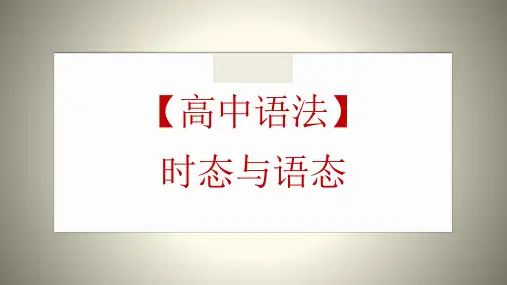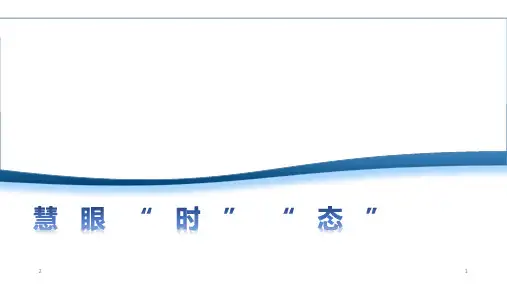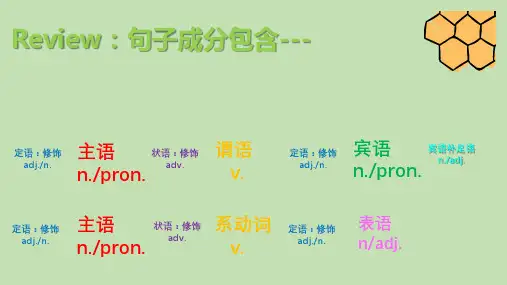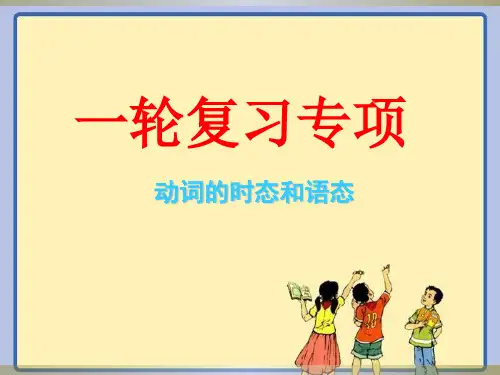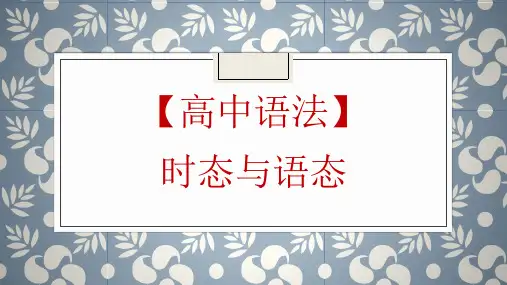路漫漫其修远兮,吾将上下而求索!
4.有些非谓语动词以主动形式出现,表示被动意义。常见的有: (1)be to blame,be to seek,be to let等。 I am to blame. 我该受责备。 (2)need/want/require/deserve/stand/bear等后接doing。 The library needs repairing. 图书馆需要修一修。 (3)“be+easy/difficult/hard/heavy/light/dangerous/pleasant/co mfortable/fit/interesting/expensive...+to do”。 The question is easy to answer. 这问题容易(被)回答。
(5)过去进行时:then,at that time,those days等; (6)将来进行时:at this time tomorrow/the day after tomorrow,from...to...tomorrow/the day after tomorrow等; (7)现在完成时:lately,recently,so far,yet,by now,up to/till now,since then,in the last/past few days/years等;
returned to tell the boss $1.2 per kg.
该题考查并列谓语,应该使用一般过去时态,因此答案为shook。
例2:When I got to the top of the mountain, the sun _________ (shine).
该题可以根据时间状语从句判断主句谓语动词动作发生的时 间,再根据句意来判断使用合适的时态。该题的答案为was shining。

